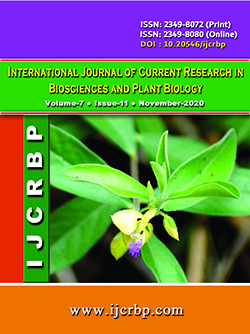 |
Online ISSN : 2349-8080 Issues : 12 per year Publisher : Excellent Publishers Email : editorinchiefijcrbp@gmail.com |
Safed musli (Chlorophytum borivilianum) belongs to a family Lilliaceae is one of the important endangered Indian herbal medicine known for adoptogenic and aphrodisiac properties acts as rejuvenator. Traditionally, Safed musli (Chlorophytum borivilianum) root has been used to treat male impotence, oligozoospermia and erectile dysfunction. Roots of safed musali are known to improve male reproductive performance by increasing the testosterone level in male partner and consumption of green leaves as immunity booster. Safed musli (Chlorophytum borivilianum) is a highly valued medicinal plant in India and is considered as “white gold” in Indian system of Ayurveda. Safed musli (Chlorophytum borivilianum) is a rich source of over 25 alkaloids, vitamins, minerals, proteins, carbohydrates, steroids, saponins and polysaccharides. A number of health tonics were prepared from safed musli. This review paper highlights latest updates on ethnobotany and pharmacological activities of safed musli (Chlorophytum borivilianum).
